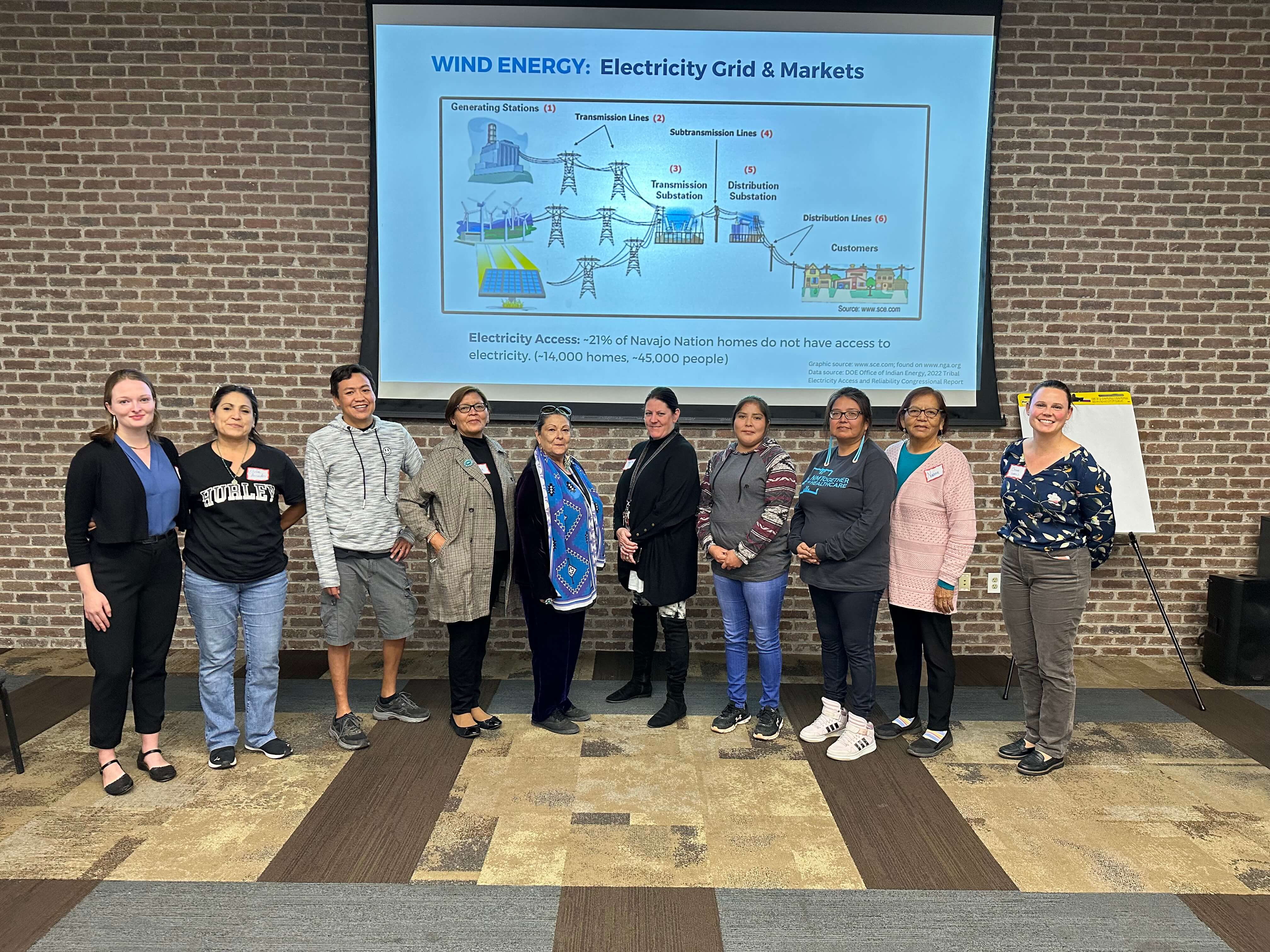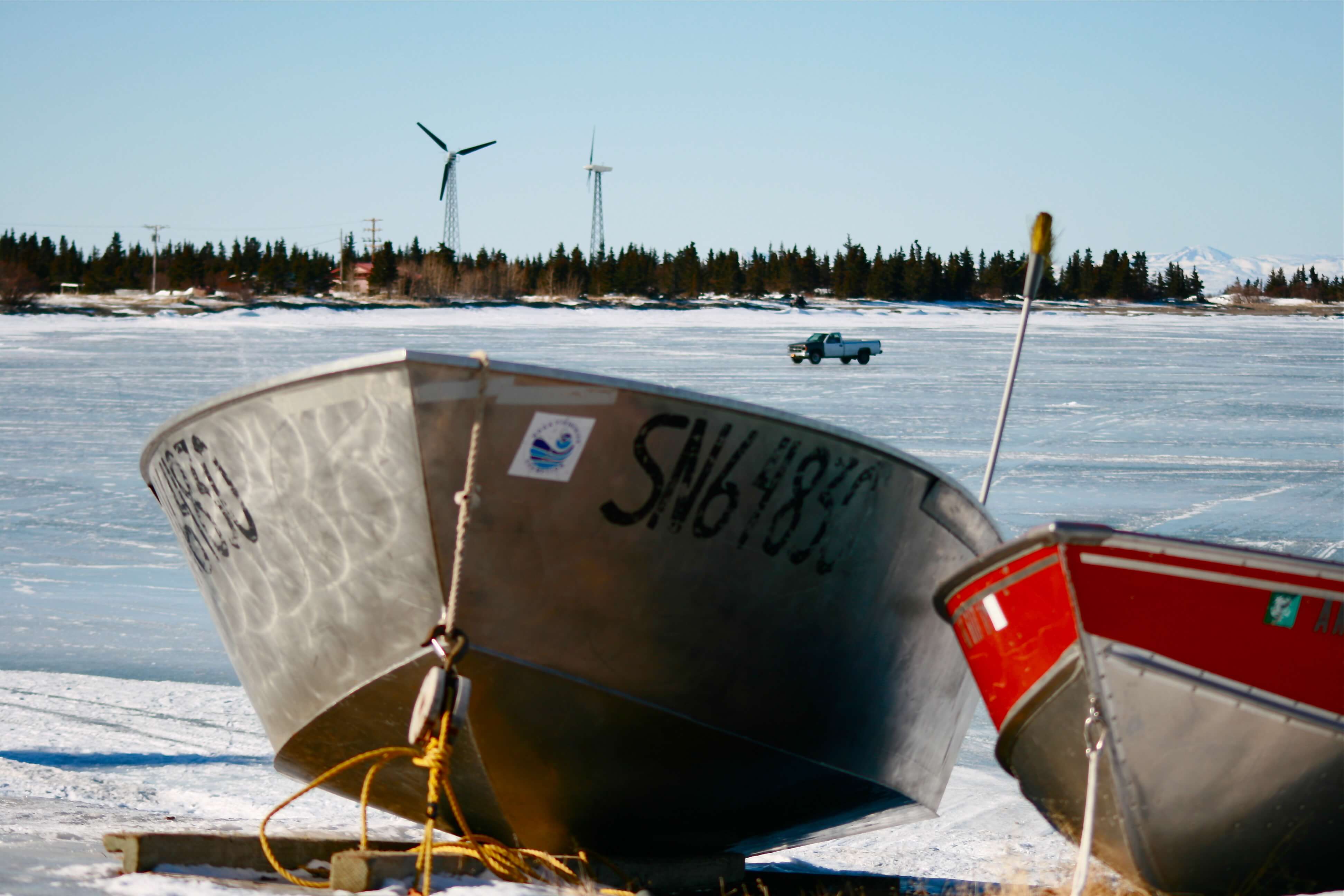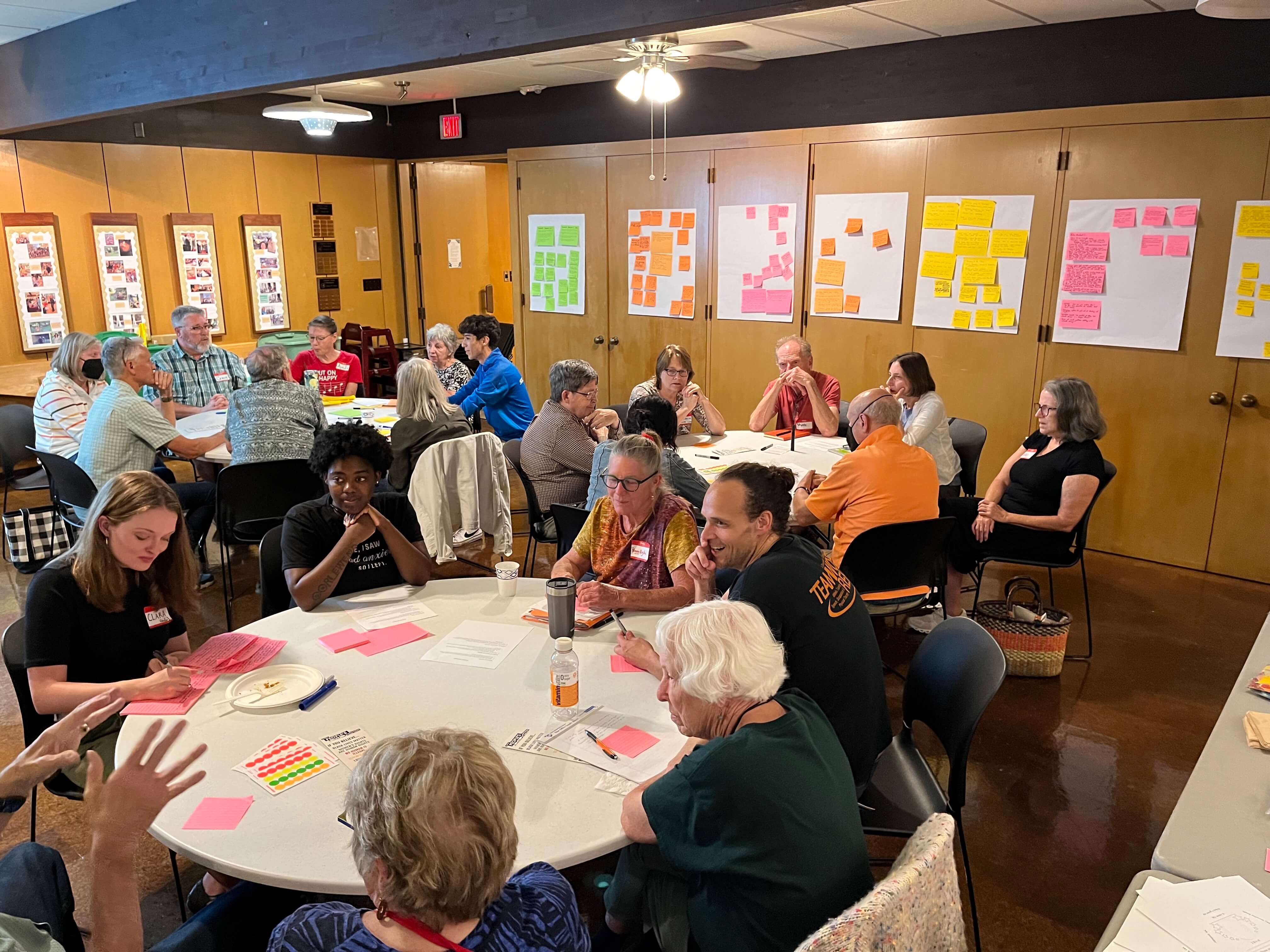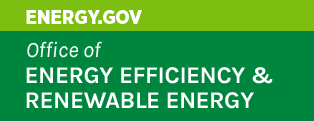Equity in Wind Energy
What Is Wind Energy Equity?
Although thinking continues to evolve on what equity means in wind energy deployment, the following definition starts to clarify how equity concepts can apply to wind energy.
Wind energy equity (which overlaps with wind energy justice) means ensuring that wind energy deployment supports the creation of a socially, economically, and environmentally just energy system through the equitable distribution of wind energy impacts and benefits. Wind energy equity encompasses multiple types of justice, including procedural, distributive, restorative, and intergenerational justice (see The Energy Justice Workbook).
Therefore, wind energy equity requires that:
-
Communities can participate in just decision-making processes related to wind energy.
-
The many types of benefits and impacts of wind energy are distributed equitably within a community and throughout society, and projects consider specific cultural, economic, and historical contexts.
-
Wind energy deployment seeks to remediate past and current harms created by the energy system and to avoid (re)creating additional harm.
-
Wind energy is developed in a way that respects communities’ histories and futures, recognizing their agency and social, economic, and cultural priorities.
Why Is Energy Equity Important?
Clean energy can bring economic, environmental, social, workforce, and other benefits to U.S. communities. But are the impacts of energy projects equitably distributed across their host communities? Not necessarily. That’s why researchers and government officials have increased their efforts to build energy equity and environmental justice into the clean energy transition.
Historically, many disadvantaged communities have been overburdened by pollution and simultaneously left out of clean energy investments. However, the clean energy transition is an opportunity to ensure equitable distribution of social, economic, and health benefits and burdens across all segments of society. To achieve energy equity, researchers, government officials, and policy makers must work with communities to design and disseminate new systems, technologies, and policies that can correct past injustices and prevent future inequities.
What Impacts Does Wind Energy Have on Communities?
Explore additional information on community impacts, including considerations about health, safety, and environmental effects. We also offer information and case studies on opportunities for communities to engage in discussions about benefits. Explore the community economics of wind energy projects.

Community members, including many members of Navajo Nation, gather in Gallup, New Mexico, to discuss wind energy equity with National Renewable Energy Laboratory researchers during the Wind Energy Equity Engagement Series in an event co-hosted with the New Mexico Social Justice and Equity Institute. Photo from Anthony Teixeira, National Renewable Energy Laboratory
What Is the U.S. Government Doing To Improve Equity?
Through the Justice40 Initiative, among other programs, the U.S. government aims to fix past energy imbalances. The Initiative’s goal is for historically disadvantaged communities to receive 40% of the benefits resulting from federal investments in climate and clean energy.
WINDExchange offers a wind equity map of the United States.
The U.S. Department of Energy also funds research and development to:
-
Better understand equity
-
Improve affordability of renewable energy technologies for distributed energy installations
-
Update and expand transmission infrastructure (power cables) to extend and improve communities’ access to the electric grid
-
Support the rapid, regulated, and thoughtful development of new clean energy installations—with support for equity of their location (site selection), community and environmental impacts, and repowering or removal once aged.
-
The Office of Indian Energy shares opportunities for Tribal communities to access federal funding and technical assistance for clean energy projects.

Federal assistance helps communities, like Kokhanok, Alaska (pictured here with a wind turbine) to install renewable energy technologies on their land without sacrificing their community’s cultural or social values. Photo from Alaska Center for Energy and Power
Communities can apply to the American-Made Challenges programs for a chance at winning federal support for their energy needs as well as competitions and prizes that entrepreneurs, members of companies, nonprofits, and academia, and students can join to innovate clean energy technologies while interacting with the public and K–12 education systems through outreach.
How Are Researchers Advancing Wind Energy Equity?
The Wind Equity Engagement Series
In 2024, a team of researchers from the National Renewable Energy Laboratory completed a four-stage project called the Wind Energy Equity Engagement Series, which was funded by the U.S. Department of Energy’s Wind Energy Technologies Office.
Through the series, the research team engaged with experts and communities to better understand:
-
How various groups, including wind energy researchers, decision makers, industry members, and community members, define equity in wind energy.
-
How to involve these groups in decision-making around new wind energy developments.
-
The potential impacts that wind energy projects can have on nearby communities.
-
How to equitably distribute benefits and burdens of wind energy projects across communities.
As of March 2024, the researchers completed the fourth and final stage of their project and have published two technical reports on their findings. The first report, Setting the Baseline: The Current Understanding of Equity in Land-Based Wind Energy Development and Operation, summarizes feedback from wind energy researchers, decision makers, and industry members. The report also shares several key takeaways from their outreach. For example, to achieve wind energy equity:
-
Wind energy project developers should engage with communities early and often throughout the development process.
-
Communities should play an active role in the development of wind energy projects as well as their impacts on social and cultural factors, like community identity, history, and sense of place.
-
Benefits from wind energy must be relevant and impactful for community members.

In 2024, a team of national lab researchers gathered perspectives from communities located near wind energy projects, like the one pictured from Bloomington-Normal, Illinois, which was co-hosted with the Prairies Rivers Network and Illinois People’s Action. Their study, which was funded by the U.S. Department of Energy's Wind Energy Technologies Office, could help create an equitable clean energy future by informing future research directions, development decisions, and government policies. Photo from Amanda Pankau, Prairie Rivers Network
The second report, Expanding the Baseline: Community Perspectives on Equity in Land-Based Wind Energy Development and Operations, summarizes feedback from three community listening sessions. Its findings highlight the need to consider each community’s specific perspectives, historical experiences, and other distinct political, cultural, and social factors to determine what wind energy equity means for them.
Distributed Wind Energy Equity
A study from Pacific Northwest National Laboratory researchers from 2023 explored how distributed wind energy could improve clean energy equity. They discovered that rural communities tend to have a higher cost burden for energy, as well as experiencing more unreliability (brownouts and blackouts) caused by aging or insufficient transmission systems to connect them to the electric grid. To combat this inequity, the researchers suggest evaluating each distributed wind power project for impacts on social, economic, and health benefits before wind turbine installation, assessing conditions and pairing desires with needs. Metrics can also help track ongoing impacts.
Future Work
More research is needed to fully define and better understand what wind energy equity means to distinct communities across the United States. Additional research could also help evaluate how regulations and policies affect wind energy equity, quantify the impacts of community benefit agreements for community members, and assess how local organizations could help communities get involved in and benefit from wind energy projects.
